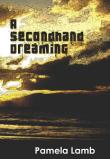AustLit
The material on this page is available to AustLit subscribers. If you are a subscriber or are from a subscribing organisation, please log in to gain full access. To explore options for subscribing to this unique teaching, research, and publishing resource for Australian culture and storytelling, please contact us or find out more.
Latest Issues
AbstractHistoryArchive Description
'
Tez and his girlfriend, Mig, watch in horror as the Old Man flings a newborn baby into the sea. Mig knows the children wrongly made must be destroyed so the god will return his power to the world, but she is approaching womanhood and fears for the fate of her own babies. Short-sighted but far-seeing, Tez has no time for gods of any kind. He and Mig set out for a derelict city seeking the source of the power that turns the lights on at night. If he can take this power to the Old Man, maybe he will be able to save Mig's babies from the sea. (Publication summary)
Publication Details of Only Known VersionEarliest 2 Known Versions of
Works about this Work
-
The Perfect Place to Set a Novel about the End of the World? Trends in Australian Post-Nuclear Fiction for Young Adults
2015
single work
criticism
— Appears in: Bookbird , vol. 53 no. 2 2015; (p. 22-29) '"Australia has a fascinating yet contradictory nuclear history," writes Jeffrey Lantis, and this ambiguity can be seen in the post-nuclear young adult fiction produced in that country. British, American and German speculative fiction for young readers set after nuclear disaster tends to suggest reasons for the disaster, and by implication, to position readers towards acting to stop the disaster happening in the real world. By contrast, Australian writers of both fantasy and speculative fiction tend to be less concerned with the cause of the disaster than with how the nuclear apocalypse can be used to explore a range of cultural issues which may appear to have little or nothing to do with nuclear disaster. Working with the notion of apocalypse as both revelation and, more popularly, as a violent "end event" (Curtis), this paper explores why young adult post-nuclear fiction produced in Australia tends to be different from that produced in Britain, the USA and Germany, and demonstrates how the nuclear disaster is used in a selection of Australian young adult post-disaster fiction to address cultural issues, particularly those dealing with Australia's Indigenous population, and with the contemporary treatment of refugees.' (Publication summary) -
[Review] A Secondhand Dreaming
2009
single work
review
— Appears in: Reading Time : The Journal of The Children's Book Council of Australia , February vol. 53 no. 1 2009; (p. 32)
— Review of A Secondhand Dreaming 2008 single work novel
-
[Review] A Secondhand Dreaming
2009
single work
review
— Appears in: Reading Time : The Journal of The Children's Book Council of Australia , February vol. 53 no. 1 2009; (p. 32)
— Review of A Secondhand Dreaming 2008 single work novel -
The Perfect Place to Set a Novel about the End of the World? Trends in Australian Post-Nuclear Fiction for Young Adults
2015
single work
criticism
— Appears in: Bookbird , vol. 53 no. 2 2015; (p. 22-29) '"Australia has a fascinating yet contradictory nuclear history," writes Jeffrey Lantis, and this ambiguity can be seen in the post-nuclear young adult fiction produced in that country. British, American and German speculative fiction for young readers set after nuclear disaster tends to suggest reasons for the disaster, and by implication, to position readers towards acting to stop the disaster happening in the real world. By contrast, Australian writers of both fantasy and speculative fiction tend to be less concerned with the cause of the disaster than with how the nuclear apocalypse can be used to explore a range of cultural issues which may appear to have little or nothing to do with nuclear disaster. Working with the notion of apocalypse as both revelation and, more popularly, as a violent "end event" (Curtis), this paper explores why young adult post-nuclear fiction produced in Australia tends to be different from that produced in Britain, the USA and Germany, and demonstrates how the nuclear disaster is used in a selection of Australian young adult post-disaster fiction to address cultural issues, particularly those dealing with Australia's Indigenous population, and with the contemporary treatment of refugees.' (Publication summary)
Last amended 19 Aug 2021 13:25:42
Export this record




